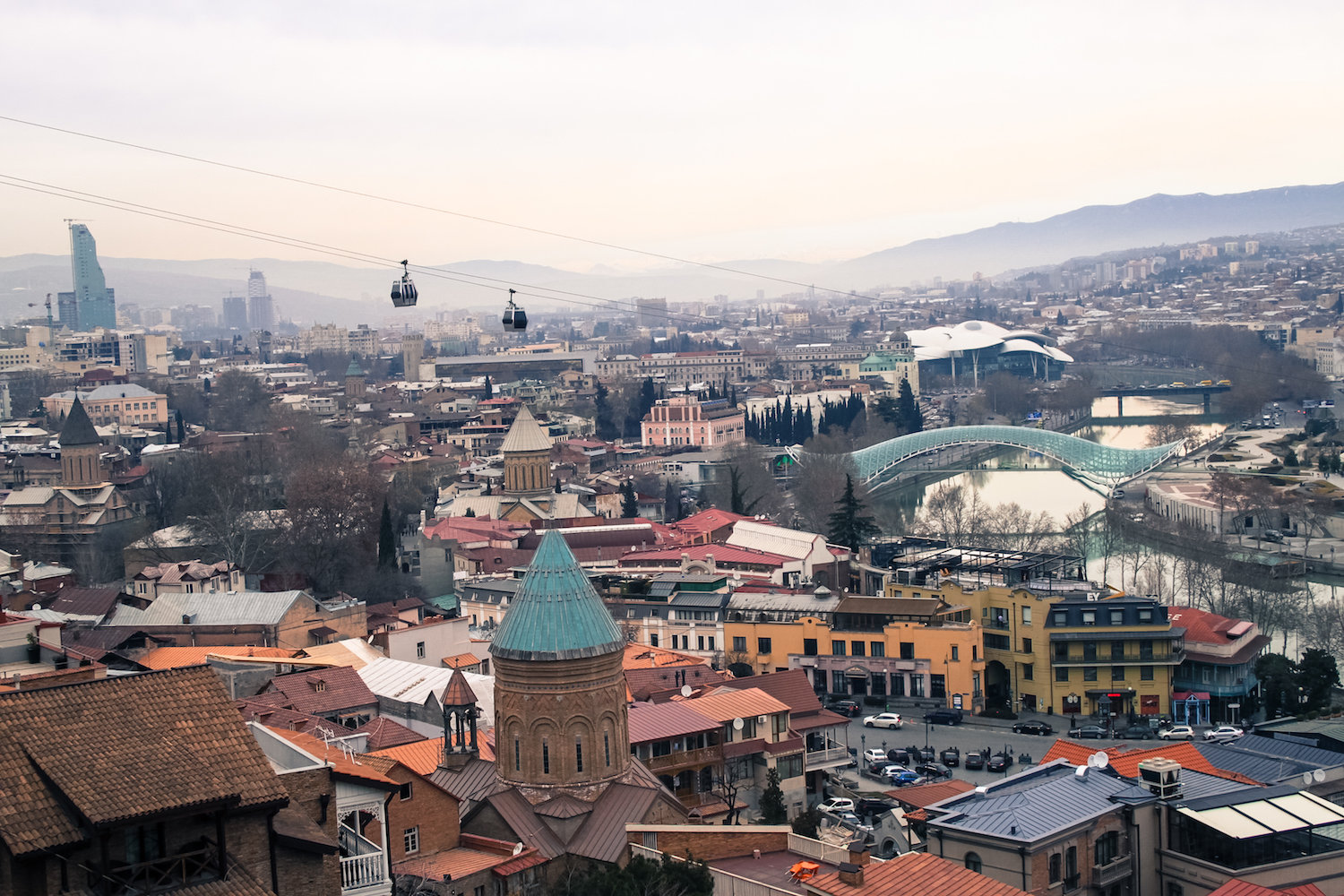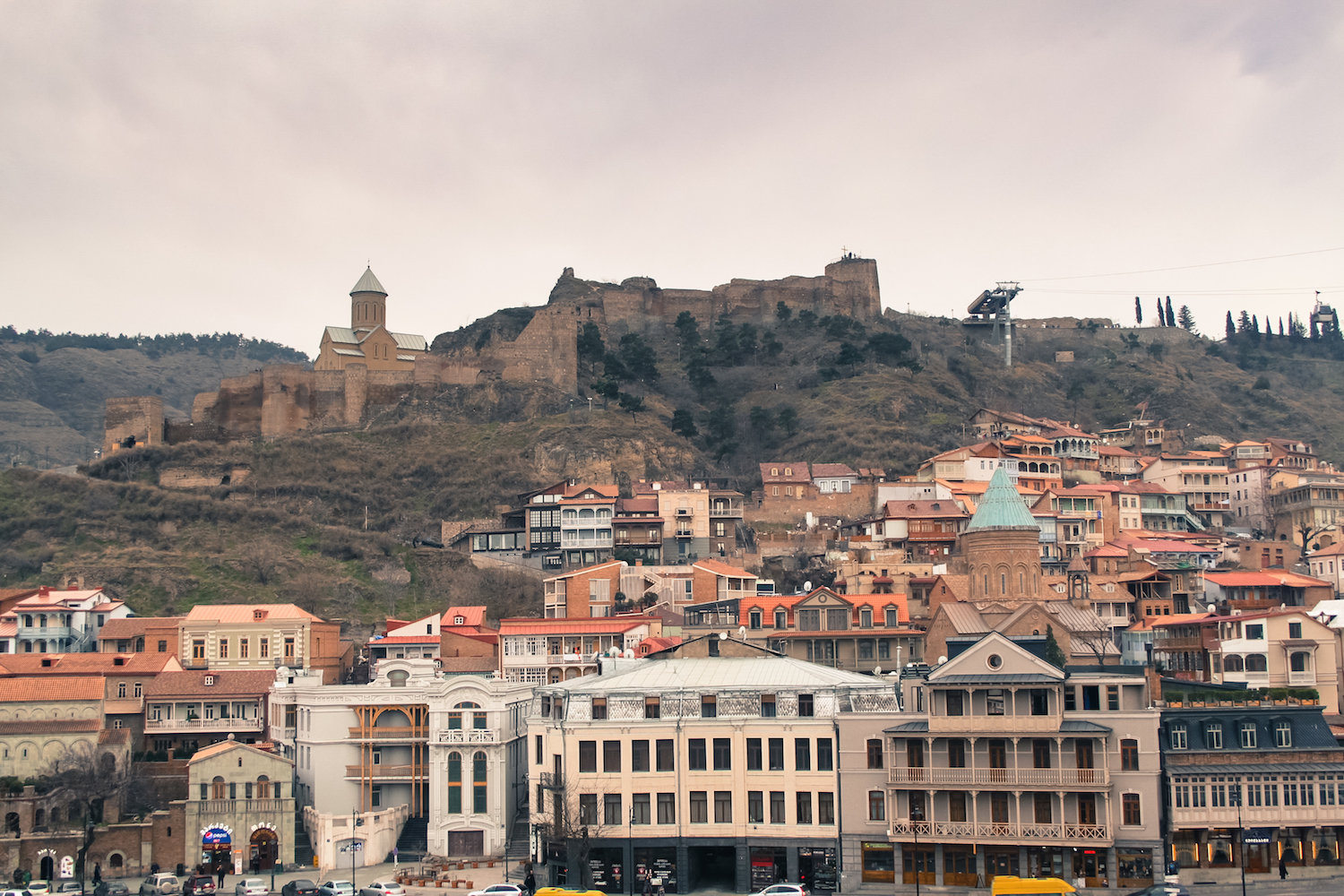
Tbilisi is a city of crumble and construction. The gondola sways up over the river, over close, claustrophobic streets seeming to fold in on themselves. Here, dented tin and red-tiled roofs cover haphazard buildings slouching into gray courtyards. There, a stunning twist of ultramodern architecture sits wrapped in glass. Bruised and dented cars give guttural chugs around tight corners, slipping past pedestrians who hug the sides of buildings where there is no sidewalk.

From above, it seems convoluted, but calm. A sleepy city, settling with dust. On street level, there’s clamor, construction sites and bridge beggars, vendors hawking homemade sour plum sauce and dark purple churchkhela – walnuts strung together and dipped in thickened grape paste. There are wine shops on every corner and little grocery stores with bins of fresh herbs, potatoes, and fruit.
But David and I are hungry. We curl down the twisted streets from our Airbnb apartment to the river and find a restaurant with big glass windows overlooking the water. It’s simple inside – rows of wooden tables and big picture menus, a TV playing an advertising reel in the corner, a case displaying sweets. But all around us, people are tucking into big plates of food – dumplings and stews, warm bread and parsley-laden salads.



We order khachapuri – hot, chewy bread baked with rich, slightly sour cheese. It’s still bubbling when it arrives. David orders fire-grilled pork kebabs covered in slivers of sweet raw onion, and for me there’s a cold stew of eggplant, potato, pepper, tomato, and herbs.
Reinvigorated, we explore the city from the top down. Narikala Fortress is a well-kept ruin stretching along a low-lying ridge. Weather-worn stone steps turn into scraggly gravel and rock, which we climb to get a better view. To our left, Mother Georgia – silent and strong. » Continue reading this post...